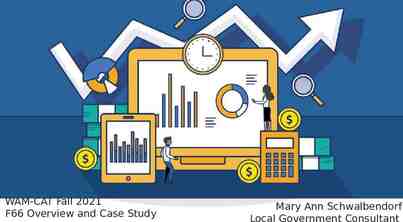Evaluating EAP: texts, the digital and sociomaterial practice
47 Slides5.38 MB
Evaluating EAP: texts, the digital and sociomaterial practice Lesley Gourlay UCL Institute of Education BALEAP PIM Edinburgh 2017
Modes and media of communication carry meanings between streams and flows that make up the texture of the contemporary world, and historically literacy is one of the most important channels through which meanings have crossed space and time. (Kell 2006: 147) 2
1) 2) 3) 4) 5) 3 Literacy as social practice Critiquing literacy frameworks Meaning-making and the digital Text trajectories, spaces and networks Implications for EAP
1) Literacy as social practice 4
‘Academic Literacies’: Background Linguistic anthropology studies of writing in social contexts (e.g. Brice-Heath 1983) Proposed a social, not cognitive view of literacy (Street 1984) ‘New Literacy Studies’ (Barton 1994)
The problem with ‘literacy skills’ Emphasises textual features not process Analysis of grammatical / lexical features Sees writing as generic and transferable Assumes agreement about requirements Sees writing as a transferable set of skills Sees students as in deficit, faulty
Academic literacies An alternative to a ‘skills’ model of academic writing (Lea & Street 1998) Challenge to a ‘deficit’ view of students Recognises issues of identity and power in writing (e.g. Lillis 2001) Views writing as inseparable from content
2) Critiquing literacy frameworks 8
Frameworks: cognitive or attitudinal, mixture of capabilities, skills and attributes Literacies: assumed to be quantifiable, stable, generic and transferable entities Seen as residing in the individual and amenable to ‘development’ of the student Using aspirational, qualitative adjectives: ideology of the graduate as a quality-assured ‘product’. Gives impression of ‘learner-centredness’, however social actors & situated practices are oddly ‘absent’.
3) Meaning-making and the digital 1 0
1 1 www.napier.ac.uk
www.napier.ac.uk 1 2
1 3 www.flickr.com/photos/sarvodaya/3861823/
The ‘figured world’ of literacy Texts constitutive of knowledge & identities (e.g. Ivanič 1998, Lillis 2001) ‘ artefacts meaningful to the figured world of literacy’ (Bartlett & Holland 2002:13) Humans & artefacts as hybrid actors (Holland et al 1998) The university as a media system (Kittler 2004) Material campus saturated with digital mediation (Gourlay 2013)
4) Text trajectories, spaces & networks 1 5
IOE JISC Digital Literacies Project – 2-year study – Focus groups – Longitudinal multimodal journalling – Interviews & talk around texts
Digital literacies: The constantly changing practices through which people make traceable meanings using digital technologies. Within this broad definition, specific aspects of digital literacies can be investigated and explored further, understood as in many ways offering a continuity to our understandings of literacies in general as social practice. (Gillen & Barton, 2010: 9)
Video http://jiscdesignstudio.pbworks.com/w/page/ 50732695/Digital%20Literacies%20as%20a %20Postgraduate%20Attribute%20project 18
Text trajectories Entextualisation, where talk is lifted out of interactional setting and becomes text (e.g. Silverstein & Urban 1996) Texts and discourses move around and are recontextualised into new interpretative spaces In these transitions they undergo significant changes in meaning (Blommaert 2005, Ehrlich 2012, Kell 2006)
Print & digital text trajectories
Spaces We recognise space as the product of interrelations; as constituted through interactions, from the immensity of the global to the intimately tiny We recognise space as always under construction. Precisely because space on this reading is a product of relations-between, relations which are necessarily embedded in material practices which have to be carried out, it is always in the process of being made. (Massey, 2005: 9)
Contingent Not a neutral backcloth or context but contingent, dynamic & engaged in meaningmaking.
Unbounded 2 9
3 0
Symbolic Bloomsbury: ‘Academic, historical, artistic, studious, important’
Delineating
Intimate
Networks and assemblages Literacies as material assemblages of human / nonhuman actors, texts, devices, spaces & mobilities. (Gourlay, Hamilton & Lea 2013)
Removing the agency of texts and tools in formalising movements risks romanticising the practices as well as the humans in them; focusing uniquely on the texts and tools lapses into naïve formalism or techno-centrism. Leander & Lovvorn (2006: 301)
Humans, and what they take to be their learning and social process, do not float, distinct, in container-like contexts of education, such a classrooms or community sites that can be conceptualised and dismissed as simply a wash of material stuff and spaces. The things that assemble these contexts, and incidentally the actions and bodies including human ones that are part of these assemblages, are continuously acting upon each other to bring forth and distribute, as well as to obscure and deny, knowledge. (Fenwick et al, 2011: vii)
The more one works with digital technologies the more the keyboard comes to seem an extension of one's thoughts rather than an external device on which one types. Embodiment then takes the form of extended cognition, in which human agency and thought are enmeshed within larger networks that extend beyond the desktop computer into the environment. (Hayles 2012:3)
An intermediary is ‘ what transports meaning or force without transformation: defining its inputs is enough to define its outputs’, while mediators ‘transform, translate, distort, and modify the meaning or the elements they are supposed to carry’ (Latour 2005: 39)
Nonhuman actors / mediators I feel like, also that Google is equally watching you. You know, they’re all watching you, they’re all trying to sell you things [ ] You know, I don’t want my friends to spy on me, I don’t want my friends to know what I listen to on YouTube. (Sally Int. 1) My third half of my brain is Google scholar. (Frederick Int. 2) I think they (the technologies) control me as well, because I can’t really do anything without them (Faith Int. 1)
It’s not necessarily the working with, sort of, the traditional practices, but much more about the, you know, our physical bodies in space, rather than And thinking about online environments as being the iPhone, or whatever it is, connected to a projector, or working then with the iPad, and connecting, so you’ve got this kind of circuit within a physical space. (Django Int. 1)
Conclusions Literacy is always situated social practice Situated practice needs to include the sociomaterial Networks enrol nonhuman actors Space is contingent, emergent, symbolic & intimate This standpoint destabilises ‘commonsense’ binaries such as user/ device, author / text, practice / context. 41
Measures of success in EAP? Degree of challenge to insessional division between ‘home’ and ’international’ student provision Degree to which digital media use in provision reflects its use in academic practice Degree of ‘entanglement’ and dialogue with students, academics and specific contexts of academic practice Degree of engagement with academic content in addition to writing processes Degree of challenge to assumptions around EAP / academic roles and responsibilities Degree of emphasis on qualitative / ethnographic institutional scholarship and research
Implications for Practice Writing Centre model as an alternative EAP provision using digital media throughout, digital expertise a requirement for EAP professionals Information literacy education: joint provision with library professionals Strong links with academic departments and programmes at the level of provision Subject knowledge and epistemological awareness required from EAP professionals Robust support for doctorates and institutional research built in to EAP work patterns Institutional strategic buy-in and adequate resource, grade 8 minimum contracts
Questions and comments? 44
References Bartlett, L. & Holland, D. 2002. Theorizing the space of literacy practices. Ways of Knowing 2(1), 10-22. Beetham, H. & Sharp, R. 2010. Current Issues and Approaches in Developing Digital Literacy. JISC. www.slideshare.net/jisc-elearning/current-issues-and-approaches-in-dev eloping-digital-literacy Belshaw, D. 2011. What is ‘digital literacy’? A pragmatic investigation. Doctoral Thesis, Durham University. http://neverendingthesis.com/doug-belshaw-edd-thesis-final.pdf Blommaert, J. 2005. Discourse: A Critical Introduction. Cambridge: Cambridge University Press. Ehrlich, S. 2012. Text trajectories: legal discourses and gendered
Fenwick, T., Edwards, R. & Sawchuk, P. 2011. Emerging Approaches to Educational Research: Tracing the Sociomaterial. London: Routledge. Kell, C. 2006. Crossing the margins: literacy, semiotics and the recontextualisation of meanings. In Pahl, K. & Rowsell, J. Travel Notes from the New Literacy Studies: Instances of Practice. Clevedon: Multilingual Matters, 147-171. Holland, D., Lachicotte, W.,Skinner, D. & Calin, C. 1998. Identity and Agency in Cultural Worlds. Cambridge MA: Harvard University Press. Kothari, U. 2001. Power, knowledge and social control in participatory development. In B. Cooke & U. Kothari (Eds.) 2001. Participation: The New Tyranny? London: Zed Books, 139-152. 4 6
Kittler, F. 2004. Universities: wet, hard, soft and harder. Critical Inquiry 31(1), 244-255. Latour, B. 2005. Reassembling the Social: An Introduction to ActorNetwork-Theory. Oxford: Oxford University Press. Lea, M. 2005. ‘Communities of practice’ in higher education: useful heuristic or educational model? In Beyond Communities of Practice, D. Barton, & K. Tusting (Eds.) Cambridge: Cambridge University Press, 180-197. Leander, K. & Lovorn, J. 2006. Literacy networks: following the circulation of texts, bodies and texts in the schooling and online gaming of one youth. Cognition and Instruction 24 (3), 291-340. Massey, D. 2005. For Space. London: Sage. Silverstein, M. & Urban, G. (Eds.)1996. Natural Histories of Discourse. London: University of Chicago Press.




















































